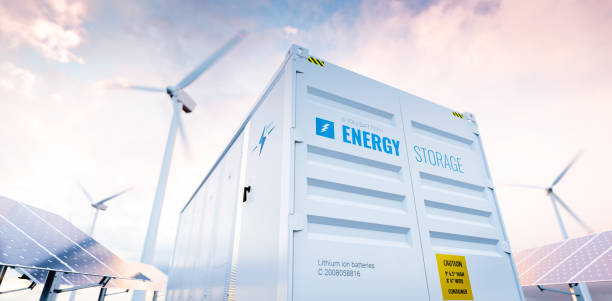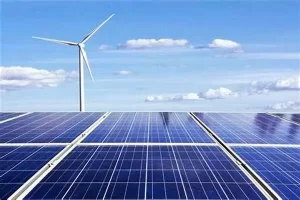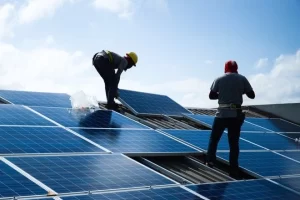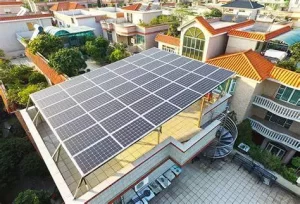Overcoming Intermittency: Enhancing Reliability of Wind Solar Energy Systems
In the global pursuit of clean energy transition, wind and solar power stand as two major pillars of renewable energy with limitless potential. However, the inherent intermittency of wind solar energy systems has been a key challenge restricting their widespread application and stable supply. This article delves into strategies for overcoming this issue to improve the reliability of wind solar energy systems.

Understanding the Nature of Intermittency Issues
Intermittency in wind energy primarily stems from the variability and unpredictability of wind speeds. The strength and direction of wind vary significantly over time and location, causing fluctuations in wind power output, which can even cease completely during certain periods.
Solar energy, on the other hand, is affected by factors such as day-night cycles, seasonal changes, and weather conditions (e.g., cloud cover). Solar power generation is high during sunny days but drastically decreases or stops entirely at night or during overcast weather.
Such intermittency places enormous pressure on the balance and stability of the power grid, posing severe challenges for effective energy storage and distribution.
Strategies to Enhance Wind Energy System Reliability
Optimizing Wind Farm Site Selection and Layout
By analyzing precise meteorological data, selecting regions abundant in stable wind resources for wind farm construction can enhance reliability. Rational planning of turbine layout can reduce wake effects and improve wind capture efficiency. For example, array layouts are suitable for vast plains, while personalized designs are necessary for complex terrains based on topography and wind patterns.
Wind Turbine Technological Innovations
Developing advanced turbine blade designs to enhance electricity generation performance under low wind speeds expands the range of usable wind velocities. Smart control technologies enable turbines to adjust blade angles and rotational speeds based on real-time wind speed and direction, optimizing electricity generation efficiency.
Coordinated Dispatch of Multiple Wind Farms
Integrating and coordinating wind farms located in different geographical areas improves overall output stability. During unfavorable wind conditions in one area, power deficits can be supplemented by other wind farms, smoothing total output power.
For instance, establishing regional energy management systems facilitates information sharing and collaborative operations among wind farms.
Methods to Enhance Solar Energy System Reliability
Efficient Solar Cell Technologies
Continual research and promotion of higher efficiency solar cell materials and manufacturing processes, such as perovskite solar cells and heterojunction solar cells, increase electricity generation per unit area. Simultaneously, improving battery degradation resistance extends operational lifespans.
Solar Tracking Systems
Installing solar tracking devices enables photovoltaic panels to dynamically follow the sun’s position, maximizing direct sunlight absorption and enhancing electricity generation efficiency. These tracking systems can be single-axis or dual-axis, selected based on specific application scenarios and cost-effectiveness.
Application of Energy Storage Technologies
Widespread adoption of battery energy storage systems, such as lithium-ion batteries and sodium-sulfur batteries, stores surplus solar power generated during peak periods for use during nighttime or cloudy days. Additionally, exploring other storage methods like pumped hydro storage and compressed air energy storage meets diverse scales and demands of energy storage applications.
Integration of Wind Solar Systems
Complementary Wind-Solar Power Generation
Integrating wind solar energy systems capitalizes on complementary advantages. Solar energy dominates during sunny days with low wind speeds, while wind energy takes precedence during nighttime or when wind speeds are higher. Optimizing the ratio between the two enhances overall system stability and reliability.
Microgrids and Distributed Energy Systems
Constructing microgrid systems encompassing wind, solar, energy storage, and other distributed energy sources achieves self-sufficiency in energy production and optimized distribution within microgrids, reducing dependency on the main power grid and improving local energy supply reliability. For instance, remote communities or islands can establish independent wind-solar hybrid microgrids for autonomous power supply.
Policy Support and Market Mechanisms
Establishing a Stable Policy Framework
Governments can enact long-term policies encouraging renewable energy development, including subsidy policies and feed-in tariffs, providing investors and businesses with stable market expectations to promote technological research and project construction.
Building Electricity Market Mechanisms
Enhancing electricity market rules to allow flexible trading and dispatch of renewable energy electricity guides rational energy allocation through price signals. For example, establishing green electricity certificate trading markets incentivizes the production and consumption of renewable energy.
In conclusion, overcoming the intermittency of wind solar energy systems to enhance their reliability requires a comprehensive approach integrating technological innovation, optimized system design, integration of multiple energy sources, strengthened energy storage applications, and guided policy support and market mechanisms. Only through these efforts can we fully harness the potential of wind and solar energy, achieving stable and sustainable clean energy supply for a brighter future.
Contact us
- Email:[email protected]
- Tel: +86 13651638099
- Address: 333 Fengcun Road, Fengxian District, Shanghai
Get A Quote Now!

Read more

Unveiling Photovoltaic+Energy Storage: Four Major Application Scenarios Leading the Future of Energy
In this way, the energy landscape is evolving, and one of the most thrilling developments in renewables is the integration of photovoltaics energy storage.

From Theory to Practice: Four Methods for Estimating Photovoltaic Power Generation
Photovoltaic power generation has become an essential part of modern energy solutions, particularly in home solar systems and distributed power applications

Rack-Mounted Lithium Iron Batteries: Creating Efficient and Reliable Energy Storage Solutions
When it comes to modern energy solutions, rack-mounted lithium iron batteries are taking center stage in a variety of industries. Whether you’re powering data centers, stabilizing energy for households, or keeping critical systems online at 5G base stations, these batteries have become the unsung heroes of our electrified world.

Late Night Energy Saving Tips: How to Maximize Electricity Savings During Off-Peak Hours
With rising energy costs, homeowners are increasingly exploring innovative ways to save on their electricity bills. One effective approach is utilizing off-peak hours—times when electricity rates are significantly lower due to reduced demand.
